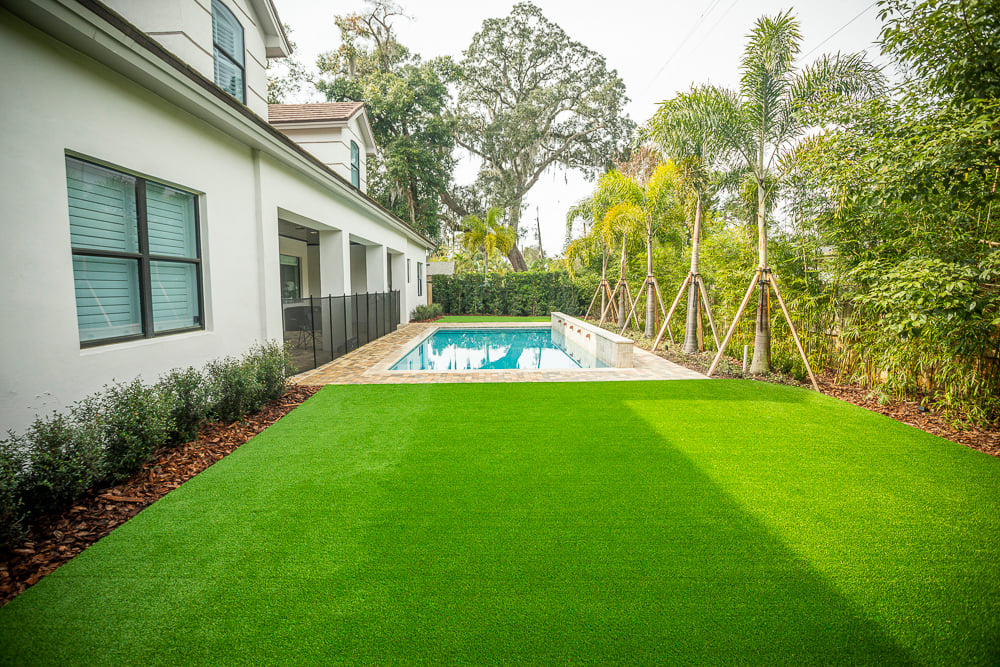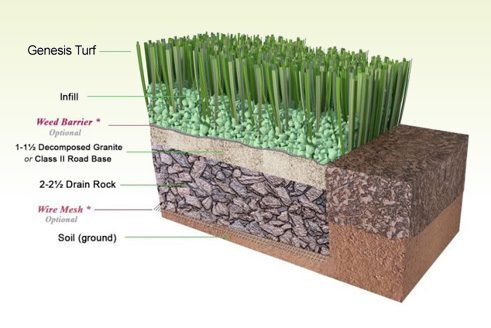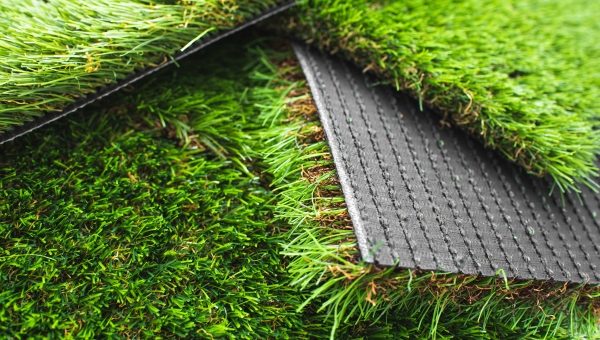Affordable Turf Installation Phoenix AZ for a Hassle-Free Lawn Solution
Affordable Turf Installation Phoenix AZ for a Hassle-Free Lawn Solution
Blog Article
Explore the Environmental Conveniences of Opting for Synthetic Grass Solutions
The adoption of fabricated lawn remedies provides a compelling chance to deal with pressing ecological obstacles. By significantly minimizing water usage and lessening the application of dangerous chemicals, these options not just promote lasting landscape design but also protect regional ecosystems.
Water Preservation Conveniences
One of the most considerable advantages of man-made turf is its ability to preserve water. In comparison, fabricated lawn does not require watering, dramatically minimizing the general need for water sources.
By eliminating the requirement for normal watering, synthetic grass adds to sustainable landscape practices and aids reduce the environmental influence of excessive water consumption. Furthermore, the preservation of water includes the decrease of overflow, which can cause soil disintegration and waterway pollution.
Furthermore, the setup of synthetic grass allows house owners and communities to allocate water sources much more successfully, focusing on crucial usages such as alcohol consumption water and farming. The change in the direction of fabricated lawn not only promotes accountable water use yet likewise lines up with more comprehensive ecological objectives focused on protecting natural deposits.
As neighborhoods increasingly focus on sustainability, the water conservation advantages of fabricated lawn offer a compelling situation for its fostering in residential and business landscape design jobs.
Reduced Chemical Usage
The shift to synthetic grass substantially reduces the dependence on chemical treatments typically utilized in all-natural yard upkeep. Conventional lawn management typically involves the application of herbicides, pesticides, and plant foods to advertise development and control insects. These chemicals can pose risks to human health, neighborhood wild animals, and the environment, contributing to dirt and water contamination.
In comparison, synthetic turf gets rid of the need for these damaging compounds. By decreasing the release of artificial compounds into the community, man-made grass advertises much healthier soil and water systems.
Additionally, the lack of chemical drainage related to synthetic lawn installments helps shield neighborhood waterways from pollution, sustaining aquatic life and preserving biodiversity. Arizona turf. As areas significantly prioritize sustainable methods, choosing for synthetic grass offers a sensible solution that straightens with ecological conservation goals. Through this change, residential or commercial property proprietors can appreciate rich environment-friendly areas without endangering environmental health and wellness, leading the way for a more lasting future
Lower Carbon Impact

In addition, the installation of synthetic grass can result in significant water preservation. Natural grass need considerable quantities of water for irrigation, which not just includes to the carbon impact connected with water extraction and therapy but likewise pressures neighborhood water resources. On the other hand, fabricated lawn requires minimal upkeep, calling for no watering, thus significantly reducing water usage and its connected energy costs.
Additionally, the longevity of man-made turf adds to its reduced carbon effect. With a life-span of as much as 15 years or even more, the demand for constant substitutes is lessened, causing much less waste and reduced power intake in production and taking care of typical turf choices. In general, synthetic grass presents a lasting choice for eco mindful landscape design.
Environment Conservation
Habitat preservation is an essential consideration in the dispute over landscaping choices, especially when contrasting fabricated turf to all-natural lawn. Natural grass yards often call for comprehensive upkeep, including using herbicides, pesticides, and fertilizers, which can negatively impact local environments. These chemicals can leach into the dirt and rivers, hurting indigenous plants and fauna and interrupting neighborhood environments.
On the other hand, synthetic grass presents a chance to lower the eco-friendly impact of landscape design. By choosing artificial grass, house owners can lessen the interruption of natural environments connected with standard lawn treatment techniques. Synthetic grass removes the demand for unsafe chemicals, consequently securing nearby wildlife and preserving the honesty of bordering ecosystems. Additionally, the installment of man-made grass can lead to the conversion of former grass locations into more biodiverse landscapes, such as pollinator yards investigate this site or native plant locations, which can sustain neighborhood wildlife.
Eventually, the transition to synthetic turf not only conserves water and decreases maintenance efforts however also promotes a more harmonious connection in between human tasks and the natural atmosphere, promoting habitat conservation while doing so.
Long-Term Sustainability
Long-term sustainability is a critical element in assessing the benefits of fabricated lawn over typical turf yards. Among the most considerable benefits of synthetic turf is its durability; it can last as much as 15-20 years with minimal upkeep, whereas natural lawn calls for frequent reseeding and substitute. This longevity minimizes the need for consistent resources, such as water, fertilizers, and pesticides, which are vital for keeping a healthy yard yard.
In addition, man-made turf adds to a decrease in carbon discharges linked with lawn care devices. Standard lawns frequently require gas-powered mowers, trimmers, and blowers, every one of which contribute to air pollution. Phoenix turf companies. In comparison, synthetic grass gets rid of the demand for such devices, promoting a cleaner setting
Moreover, the production of synthetic grass progressively uses recycled products, boosting its sustainability profile. As producers take on green practices, the ecological impact of synthetic grass proceeds to lessen.

Verdict
The adoption of synthetic grass options presents considerable ecological benefits, consisting of significant water conservation, lowered dependence on harmful chemicals, pop over to these guys and a reduced carbon footprint. Artificial turf aids in maintaining natural environments by reducing land disruption and advertising long-lasting sustainability via the use of resilient materials. Collectively, these aspects emphasize the possibility of synthetic lawn to add positively to ecological wellness and use a viable option to traditional landscaping techniques in a significantly resource-conscious world.
In contrast, man-made turf does not require watering, dramatically minimizing the general demand for water resources. By decreasing the launch of synthetic compounds right into the ecosystem, Full Article man-made turf promotes healthier dirt and water systems.
In addition, the setup of synthetic lawn can result in considerable water preservation. In comparison, synthetic grass requires minimal maintenance, requiring no watering, thereby dramatically reducing water usage and its associated power costs.

Report this page